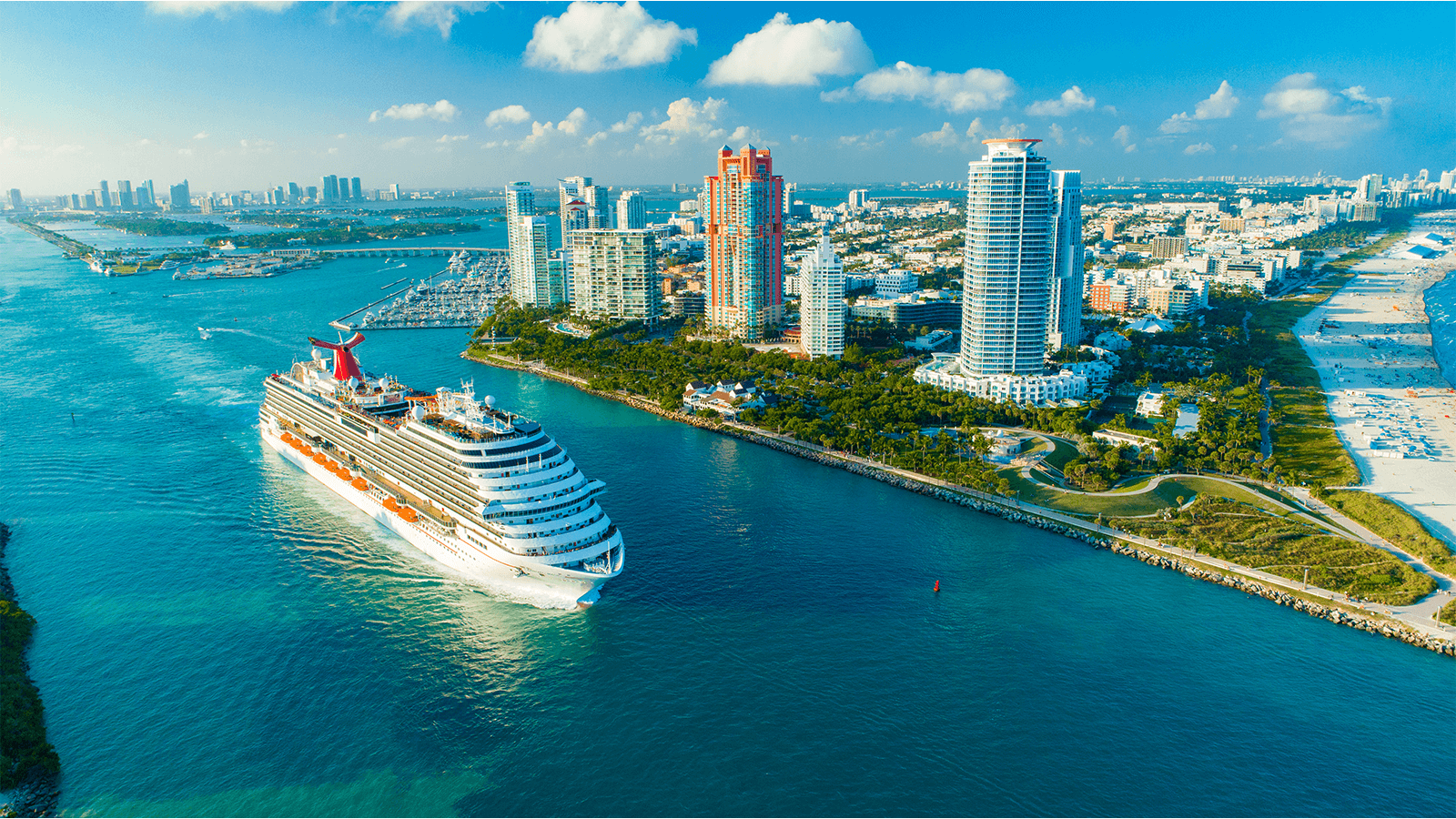
Why are people comparing Icon of the Seas with RMS Titanic?
Royal Caribbean’s Icon of the Seas has found itself compared to arguably the most famous ship of all time – RMS Titanic. Here’s why. And it’s nothing to do with lifeboats…
Recent media has been awash with popcorn headlines regarding Royal Caribbean's Icon of the Seas. And rightly so – the new cruise ship boasts of record-breaking engineering and girth, reigning as humanity’s largest-ever cruise ship.
Following Icon's launch in January 2024, Icon has become more than just a cruise ship. Rather, she has become an ocean-going celebrity and a beacon of human achievement.
Those ticket sales are rapidly cascading towards full occupancy until next year, with Icon of the Seas swiftly promoted as the new poster child for travel agents, the must-have experience for competitive cruise-goers, and a benchmark for the cruise industry – until Cunard’s Queen Anne graces the inventory, at least.
Yet, if you delve behind the headlines, there’s a bizarre comparison going on. By consulting the realms of internet search data, there’s an outrageous contrast being drawn – that of Icon vs White Star Line’s infamous RMS Titanic.
That’s hardly a flattering comparison for those who toiled to bring Icon to fruition. RMS Titanic remains world-renowned as the ultimate maritime disaster, claiming 1,496 lives amid a jaw-dropping showcase of social prejudice and class-based entitlement. No cruise brand wants to be associated with such a pivotal tragedy.
So, what’s the deal here? Answer: Most cruise novices have Titanic blueprinted as their only frame of reference, making the White Star Line flagship a defacto benchmark – but there is more to it once you explore the concept.

Icon of the Seas vs Titanic
Why are people comparing Royal Caribbean’s trendsetter with the mother of all shipping dramas? The answer is simple: Fame. Titanic has never strayed far from public imagination, regardless of the following century’s larger and safer ships.
Courtesy of heightened recognition from Hollywood (step forward Jack and Rose) and the media – RMS Titanic technically claimed new victims last year – everyone knows that the ‘unsinkable’ Titanic was the Icon of her era. Decadent and celebrated, RMS Titanic quickly transcended all ship-based status to become a fashion statement for those who could afford passage. The new Icon of the Seas shares most of that social stature.
White Star Line set new standards for ocean-going opulence with RMS Titanic (even though RMS Olympic technically came first). The ship’s vast construction and amenities hijacked global headlines on a daily basis. Despite headlines of a very different nature following the events of April 15, 1912, Titanic now commands a modern army of devoted enthusiasts who eagerly keep her spirit alive; especially now that no survivors of the disaster are among us.
There’s a whopping 112-year difference between RMS Titanic and Royal Caribbean’s Icon of the Seas, and while there are striking similarities regarding the cruise ship’s celebrated achievements, both vessels share almost identical frenzied excitement and social commentary.
Even to someone who remains new to cruising, inevitably both RMS Titanic and Icon of the Seas will reside in their knowledge bank. Except while Titanic was unquestionably the largest and most luxurious cruise liner of her time, things have moved on. Here’s how both ships stack up against each other.

Size: Who would win in a fight?
At roughly five times bigger than RMS Titanic, Icon of the Seas not only snatches the coveted recognition as world’s largest cruise ship, but also boasts of various world firsts that push cruising into the next generation of metamorphosis.
While the Titanic once pushed the boundaries of ocean-going size with her 10 decks, four restaurants and 840 cabins, Icon eclipses all that has gone before – showcasing 20 decks packed with 40 restaurants and 2,805 cabins (1,815 staterooms, including 179 suites), not to mention the other amenities – cinemas, swimming pools, gyms etc.
As with anything American, Icon is all about size. And just to prove that sentiment, Royal Caribbean hasn’t drawn the line with their new leviathan. A second ship, Star of the Seas, will slice through the waves on her maiden voyage in 2025. Star of the Seas will likely claim the title of “largest cruise ship” upon launch – just as Hamburg-Amerika Line’s SS Imperator claimed that moniker from RMS Titanic (and her sister ship RMS Olympic) in May 1912.
Even if Icon plays second fiddle to Star in the near future, the ship is no mere dinghy. At 1,198 feet long, Icon of the Seas rivals the Empire State Building (1,250 feet without antennas) for sheer dynamics. For comparison, the Titanic stretched to 882 feet and nine inches – the largest ship of her time.
Whereas RMS Titanic proudly bragged of a solitary swimming pool exclusively for first-class passengers with extra money to burn, Icon can offer seven swimming pools and nine whirlpools for guests to enjoy. Not enough? Well, there’s always the entire water park. You catch our drift...
Arguably the biggest factor when squaring up against an opponent comes from displaced weight, and – as you may expect – Icon was born a hefty dame. RMS Titanic appears almost malnourished when judged by contemporary standards – weighing in at 46,328 gross tonnes, against the 250,800 gross tonnes displaced by Icon of the Seas.
That’s right. Icon is the equivalent of RMS Titanic five-times over – also the equal of RMS Titanic, both of her sister ships (RMS Olympic and the ill-fated HMHS Britannic) and Cunard’s iconic QE2, for good measure.

Money vs passengers
To demonstrate how far humanity’s engineering prowess has developed since 1912, RMS Titanic doesn’t even register in the top 64 largest cruise ships by weight. The same story applies to the Titanic’s length and girth. And then there’s the cost.
Titanic was built at an estimated cost of US$7.5 million in 1912, which in today's world would cost roughly US$400 million. Icon of the Seas retailed for a trifle more – clocking in at over US$2 billion. At five times the size of White Star Line’s flagship, it shouldn’t come as any surprise that the construction bill is five times as much, too.
So, what about passenger numbers? Quite a record for her time, RMS Titanic could house 2,453 travellers. Icon of the Seas has pushed the boat out a bit, offering a capacity of 7,600 passengers at maximum capacity.
Of those 2,453 Titanic passengers, not everyone had access to the ship’s cosseted heated swimming pool, stylish gym and squash court, or the Turkish bath. Guffaw, no. That was solely at the disposal of First-Class travellers only. Things are a tad different for those on Icon of the Seas – with new areas dedicated to families, dining experiences open to all passengers and public areas that surpass the swankiest of swanky hotels.
Entertainment has changed over the years, too. While RMS Titanic encouraged business talk and brandy with cigars and guffawing in the smoking rooms, a game of billiards, live music and ballroom dancing, Icon has been designed to incorporate full-scale shows across four district venues, amid more live music than you could shake a microphone at. Not to mention comedians and all manner of Broadway-style entertainment.

What about ticket prices?
Besides sinking, Titanic’s fame revolves around her status with the moneymen. First-Class suites onboard any of White Star Line’s Olympic-class ships came with a price tag capable of bringing tears to a glass eye. We’re talking over £100,00, (in today’s money) for a Parlour Suite with its own private promenade deck.
Second-class tickets were more palatable, although still pricey, and third-class tickets still commanded a premium. For that, you received three meals per day and a level of comfort unseen in each tier. The pricing structure is certainly different now. There’s no standard price for a cruise, with prices fluctuating depending on the ship and route/destination.
You can find out more about ticket/cabin prices on Icon of the Seas through the official Royal Caribbean website.
What you’ll likely notice are the benefits for guests seeking to book a higher-tier suite or cabin. While class-based tier systems have long become taboo within the cruise industry, the class system still exists in principle.
If you want the perks (such as the Royal Genie concierge service) and the benefits that come from separate and exclusive areas of the ship, then you are going to have to pay extra. Granted, that’s far from the exclusionary mantra radiated by cruising styles of old, but the cash still has to be handed over – and not everyone can afford to do that.

Can you really compare these ships?
In a word? No. In more words – absolutely not. Icon of the Seas and RMS Titanic share literally nothing, other than the public’s curiosity and a media-driven stance within our cruising heritage.
Other than taking to the seas as ocean-going vessels, the two juggernauts are in separate leagues, divided by more than a century of innovation and engineering advancement. Even then, RMS Titanic was designed for plying the harsh realities of the North Atlantic. Icon is more of a lounger – impressive though she may be.
Courtesy of the tectonic and fundamental shift that cruising underwent throughout the latter half of the 20th century, ships are currently designed and built to provide the utmost in leisure and comfort. If you want a speedy trip across the Atlantic, you go by plane. If you want to relax, you travel by ship – it’s been a landscape carved by the arrival of airplanes, something that RMS Titanic didn’t have to face.
In fact, shipping companies adapted the rulebook to suit themselves during the golden era of Transatlantic travel. The trend nowadays is based on customer service, applied on vessels that wouldn’t be fit for the historical purpose of their ancestors.
Finally, there’s the elephant in the room. The RMS Titanic currently resides almost four miles below the surface of the North Atlantic, having taken hundreds of souls to their doom. Here's hoping that Icon of the Seas never endures such calamity – and that there are enough lifeboat spaces for everyone. Of which we know there are.
Modern cruise ships are much, much larger than the likes of RMS Titanic, while offering an onboard service that moves with the times and takes the environment into account. And long may that continue, as Icon of the Seas – and other cruise ships – explore the ports that RMS Titanic never reached.














